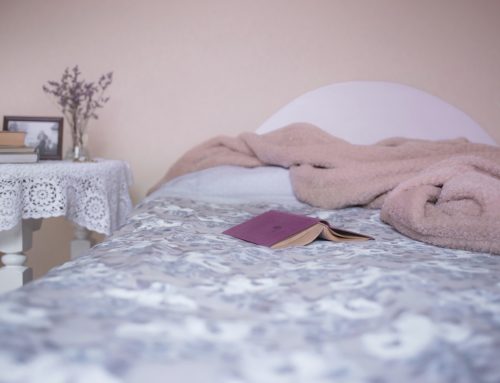In integrative medicine there are many connections between light and healing. I have always been passionate about investigating and exploring various treatment modalities that can leverage the body’s energy into healing. Recently, I found myself further drawn to this when I observed immune system parallels between chronic viral illness and post COVID syndrome. I revisited Norman Doidge’s ‘The Brain’s Way of Healing Itself’ & -in particular a chapter on Photobiomodulation (Low Intensity Laser Therapy or LILT) that mentions a BioFlex Laser device. Fueled by the science and raving reports of success from one of my colleagues, I decided to learn more and purchase a device to offer to my patients.
In Doidge’s book, he shares the story of Dr. Fred Kahn, the founder of the Bioflex laser. Dr. Kahn is a vascular surgeon who has experienced the healing potential of light therapy and further developed this tool and technology. The chapter shares stories of successful treatments targeting inflammation of many kinds, including neuroinflammation. This seemed the perfect tool to augment other integrative therapies we already use in my medical practice. Lasers are used in many modalities in medicine and other fields. Often, lasers are associated with cutting or heating- however, the use of laser light at lower intensities can have amazing therapeutic properties.
Functional & Integrative Medicine seek to understand the individual patient as a whole, applying many modalities to improve wellness and create personalized, targeted therapies to address underlying causes of illness. This nonpharmacologic, unconventional approach- using light technology for healing- excites me and aligns with my holistic perspective to health and healing. A tool that leverages LIGHT certainly has cellular and metaphysical intrigue!
“When photons encounter matter, one of four things can happen. They can be reflected away from the matter, they can pass through it, they can enter it but scatter within, or they can be absorbed without dispersing a great deal. When photons are absorbed by living tissue, they trigger chemical reactions in the light sensitive molecules within. Different molecules absorb different wavelengths of light. For instance, red blood cells absorb all the nonfood wavelengths, leaving the red ones visible. In plants, green chlorophyll absorbs all the wavelengths except green.
Human beings tend to think that light-sensitive molecules exist only in the eyes, but they come in four major types: rhodopsin (in the retina, which absorbs light for vision), hemoglobin (in red blood cells), myoglobin (in muscle), and most important of all, cytochrome (in all the cells). Cytochrome is the marvel that explains how lasers can heal so many different conditions, because it converts light energy from the sun into energy for the cells. Most of the photons are absorbed by the energy powerhouses within the cells, the mitochondria.
Amazingly, our mitochondria capture energy originating 93 million miles away—the energy of the sun—and liberate it for our cells to use. Surrounded by a thin membrane, the mitochondria are stuffed with light-sensitive cytochrome. As the sun’s phonos pass through the membrane and come in contact with the cytochrome, they are absorbed and stimulate the creation of a molecule that stores energy in our cells. That molecule, called ATP (adenosine triphosphate), is like an all-purpose battery, providing energy for the cell’s work. ATP can also provide energy that can be used by the immune system and for cell repair.
Laser light triggers ATP production, which is why it can initiate and accelerate the repair and growth of healthy new cells, including those that make up cartilage (chondrocytes), bone (osteocytes), and connective tissue (fibroblasts).
Lasers of slightly different wavelengths can also increase the use of oxygen, improve blood circulation, and stimulate the growth of new blood vessels, bringing more oxygen and nutrients to the tissues-especially important for healing.” …From /i>The Brains Way of Healing on How Lasers Heal Tissue
The BioFlex system (pictured below) uses different methods to get light into the cytochrome molecules. The first is red light, generated by 180 superluminous light-emitting diodes (LEDs). The diodes are laid out in rows and mounted on a flexible device that can contour to virtually any body part to maximize surface contact with the LEDs. In the multistage approach, first the red light is used, then the infrared light, and then the infrared laser. The red light from the LEDs penetrate one to two centimeters. The infrared light penetrates about five centimeters into the body to spread healing light even deeper. And finally, a pure beam infrared laser is used that delivers much more power than the LEDs. By the time the laser probe is applied, superficial tissues have already been saturated with so many photons from the red and infrared LEDs that the laser creates a cascade of photons that reaches as far as 22 centimeters within the body.
LILT is non-invasive, non-toxic, with no known adverse effects or drug interactions. It has helped prevent the need for surgical interventions and intends to reduce pain and the need for pharmaceuticals. LILT has often restored normal range of motion and physical function and provides a treatment alternative for patients who have not responded to conventional therapies. Physiologically, LILT has been reported to increase production and release of endorphins, cortisol (instrumental in tissue repair), & ATP (which improves and regulates cellular metabolism). Increased protein synthesis, venous and lymphatic flow facilitation, angiogenesis (oxygen saturation) and immune function are also potential physiological effects associated to LILT.
Treatment sessions are typically 30-60 minutes long. Since last summer, when I began offering the BioFlex laser therapy in my practice, I have seen some great results. The majority of patients who have been treated with the device reported a decrease in pain, enhanced relaxation and overall positive results. We had particularly impressive results on some patients treated for conditions such as: severe anxiety, neuroinflammation, wrist pain, ankle pain, and sciatica pain. Some people experience relief after just one treatment but in general can take 5-10 treatments to see results.
It is important to note, Low Intensity Laser Therapy (LILT) is not a substitute for rehabilitation and proper body mechanics, but it aims to enhance tissue repair and reduce recovery time. In addition, LILT alone cannot ‘rewire’ the brain – but it can enhance circulation and reduce neuroinflammation, both important pieces in brain health optimization. More and more research and products are out there documenting and touting the benefits of photobiomodulation (LILT) therapy. I am still learning and observing the potential benefits of this therapy, and so far- I am impressed!
Learn more: https://bioflexlaser.com/the-science/; Home Bioflex Webinar








Leave A Comment